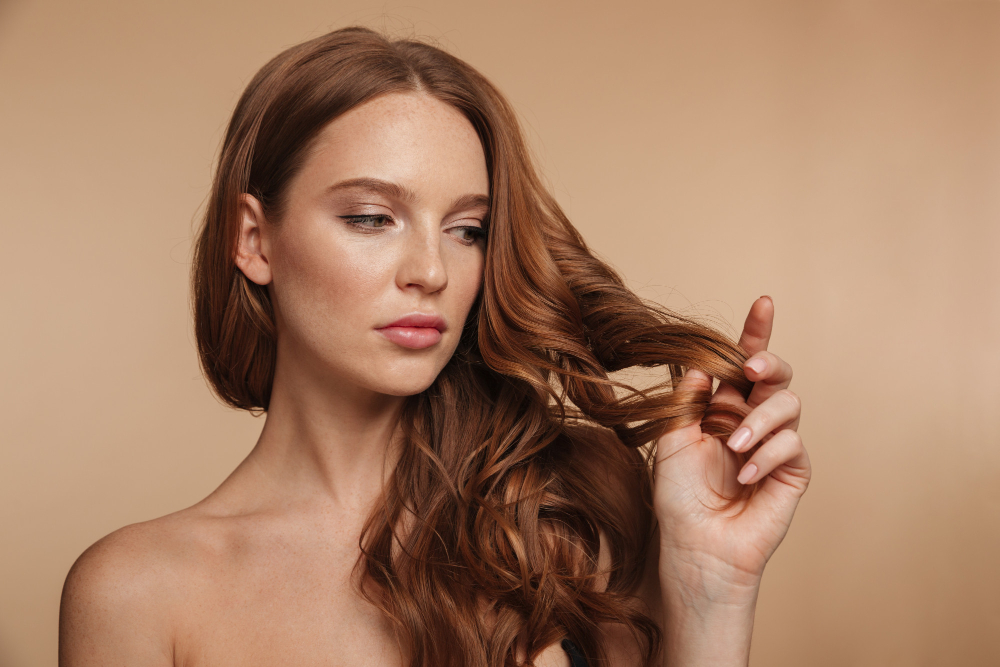Healthy hair goes far beyond mere appearance—it mirrors our overall well-being and significantly impacts how we feel about ourselves. When you understand how to properly care for your specific hair type, you can completely transform your daily routine and unlock your hair’s full potential. Whether you’re selecting the perfect shampoo or investing in advanced tools like hair stylers, creating a personalized routine becomes the cornerstone of maintaining vibrant, healthy hair. This comprehensive guide offers science-backed, practical advice that works for every hair type, empowering you to develop a truly effective care regimen.
Understanding Hair Structure and Types
Your hair is built like a complex three-layer system: the cuticle forms a protective shield on the outside, the cortex serves as the protein and pigment-rich middle layer, and the medulla acts as the innermost core. This structure matters immensely because each layer reacts uniquely to different care routines and environmental stressors.
Hair naturally falls into four main categories: straight, wavy, curly, or coily—and each demands its own thoughtful approach. Straight hair often battles excess oil since sebum glides effortlessly down the smooth shaft, while curly and coily hair frequently faces the opposite challenge of persistent dryness. The irregular curves and twists in textured hair create barriers that prevent natural oils from traveling down the strand. While genetics largely dictate your hair type, environmental factors such as humidity, sun exposure, and daily lifestyle choices play surprisingly significant roles in determining your hair’s health and behavior.
Core Principles of Healthy Hair Care
Certain fundamental principles serve as the bedrock of healthy hair care, regardless of your specific hair type:
Gentle cleansing should be your top priority. Most hair types thrive with washing 2-3 times per week using lukewarm water—hot water acts like a harsh detergent, stripping away the natural oils your hair desperately needs. Opt for sulfate-free shampoos that cleanse effectively without leaving your hair parched.
Conditioning becomes your secret weapon for maintaining that crucial moisture balance. Your hair’s cortex craves hydration to stay flexible and resilient, which prevents breakage while preserving that coveted shine. Always apply conditioner from your hair’s mid-length to the ends, carefully avoiding your scalp.
Protection from damage isn’t negotiable. Keep heat exposure to a minimum, incorporate UV protection products into your routine, and treat wet hair like fragile silk—it’s at its most vulnerable state and prone to mechanical damage.
Key Takeaway: Consistency with these fundamental practices will always outperform expensive products used haphazardly.
Tailoring Your Routine: Care Tips by Hair Type
Straight Hair:
– Zero in on controlling oil at the scalp level
– Embrace lightweight products that won’t weigh your hair down
– Use dry shampoo strategically between washes for added volume and freshness
Wavy Hair:
– Strike the perfect balance between moisture and frizz control
– Incorporate leave-in conditioners and anti-humidity products into your arsenal
– Master the scrunch-dry technique instead of brushing wet hair
Curly Hair:
– Make hydration your obsession with regular deep conditioning treatments
– Reserve wide-tooth combs exclusively for wet, well-conditioned hair
– Apply styling products to damp hair for maximum curl definition
Coily Hair:
– Demand intensive moisture through nourishing oils and rich creams
– Practice gentle detangling using your fingers or wide-tooth combs
– Embrace protective styles that minimize daily manipulation and reduce breakage risk
The Role of Tools and Techniques in Hair Health
The right tools can elevate your routine from mediocre to magnificent while safeguarding your hair from unnecessary damage. Natural bristle brushes work wonders for distributing oils throughout straight hair, while wide-tooth combs become lifesavers for preventing breakage in textured hair. When heat styling becomes unavoidable, thermal protection should be non-negotiable, and always use the lowest temperature that still gets the job done.
Today’s hair styling tools have undergone remarkable evolution, incorporating features specifically designed to preserve hair integrity. Quality tools equipped with adjustable temperature settings and ionic technology can dramatically reduce both styling time and heat exposure. The secret lies in understanding your hair’s unique tolerance levels and respecting safe temperature boundaries—typically 300°F for fine hair and up to 400°F for coarse, resilient hair.
Common Hair Care Mistakes and How to Avoid Them
Over-washing becomes a vicious cycle, stripping away natural oils and triggering either excessive dryness or your scalp’s panicked overproduction of sebum. Excessive heat styling without proper protection inflicts permanent damage on your hair’s delicate protein structure. Improper detangling—aggressively brushing soaking wet hair or starting from the roots—creates completely avoidable breakage.
Sleeping on cotton pillowcases increases friction and promotes frizz overnight; silk or satin alternatives dramatically reduce this damage. Another widespread mistake involves applying conditioner directly to the scalp, which can clog follicles and create stubborn product buildup.
When to Seek Professional Advice
Don’t hesitate to consult a dermatologist or trichologist if you notice sudden hair loss, persistent scalp irritation, or dramatic changes in your hair’s texture. These specialists can identify underlying culprits like hormonal imbalances, nutritional deficiencies, or scalp disorders that require medical intervention rather than cosmetic band-aids.
Final Reflection and Takeaway
Achieving genuinely healthy hair demands understanding your unique hair type, committing to consistent care routines, and choosing appropriate tools and techniques. Keep in mind that hair health represents a long-term investment—meaningful improvements typically require 3-6 months of dedicated, consistent care. Embrace patience throughout this process, adapt your routine to accommodate seasonal changes and your hair’s evolving needs, and remember that the healthiest hair often emerges from the simplest, most consistent practices rather than elaborate product regimens.

